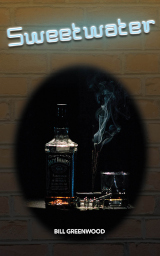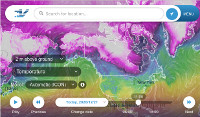Why this blog?
Until this moment I have been forced to listen while media and politicians alike have told me "what Canadians think". In all that time they never once asked.
This is just the voice of an ordinary Canadian yelling back at the radio -
"You don't speak for me."
email Kate
Goes to a private
mailserver in Europe.
I can't answer or use every tip, but all are appreciated!


Katewerk Art
Support SDA
Paypal:
Etransfers:
katewerk(at)sasktel.net
Not a registered charity.
I cannot issue tax receipts
Favourites/Resources
Instapundit
The Federalist
Powerline Blog
Babylon Bee
American Thinker
Legal Insurrection
Mark Steyn
American Greatness
Google Newspaper Archive
Pipeline Online
David Thompson
Podcasts
Steve Bannon's War Room
Scott Adams
Dark Horse
Michael Malice
Timcast
@Social
@Andy Ngo
@Cernovich
@Jack Posobeic
@IanMilesCheong
@AlinaChan
@YuriDeigin
@GlenGreenwald
@MattTaibbi
Support Our Advertisers

Sweetwater

Polar Bear Evolution

Email the Author

Pilgrim's Progress

How Not To Become A Millenial

Trump The Establishment
Wind Rain Temp

Seismic Map

What They Say About SDA
"Smalldeadanimals doesn't speak for the people of Saskatchewan" - Former Sask Premier Lorne Calvert
"I got so much traffic after your post my web host asked me to buy a larger traffic allowance." - Dr.Ross McKitrick
Holy hell, woman. When you send someone traffic, you send someone TRAFFIC.My hosting provider thought I was being DDoSed. - Sean McCormick
"The New York Times link to me yesterday [...] generated one-fifth of the traffic I normally get from a link from Small Dead Animals." - Kathy Shaidle
"You may be a nasty right winger, but you're not nasty all the time!" - Warren Kinsella
"Go back to collecting your welfare livelihood. - "Michael E. Zilkowsky
B.L.E.V.E Boiling Liquid, Expanding Vapor Explosion
It’s what happens when a vessel containing a flamable liquid above its ignition (and boiling) temperature ruptures in a fire.
The sudden release of pressure causes the liquid to boil and the vapor expands rapidly IN ADDITION to exploding!
http://en.wikipedia.org/wiki/Boiling_liquid_expanding_vapor_explosion
Just as a minor point, this is why, if you hear of a propane delivery truck that’ slid off a highway, everyone near is losing their mind.
This is similar, but bigger, far more casualties… just awful.
http://en.wikipedia.org/wiki/Texas_City_Disaster
What a terrible tragedy. Much of the town seems to be devastated. My thoughts & prayers are with them.
Whatever caused this, given the proximity to the Boston attacks and the 20th anniversary of the Waco siege (not to mention Waco itself), people are going to be on edge until and unless this is proven to be a freakish coincidence.
Let’s hope this string of disasters stops here.
BTW, if you live near an industrial facility of any kind, the value of your property just dropped.
Just a train of natural or man made disasters in America. My prayers go out to the town & families. Working in a Plywood factory with wood dust, or Grain bin storage. Including mines, or Poison gas leaks drilling . Can be quick , sudden & lethal.
Firemen though, besides soldiers have the most fatalities.
I hope this is not an attack, as if that makes any difference to those who lost people today.
Its going to be a tense week Stateside for a while.
Just horrible for those who lost kin.
UPDATED: Possible Boston Marathon Suspect Photos………
http://commoncts.blogspot.com/2013/04/are-these-photos-of-boston-bombing.html
“…Firemen though, besides soldiers have the most fatalities…”
The 10 most dangerous jobs
Occupation Fatalities per 100,000
Timber cutters 117.8
Fishermen 71.1
Pilots and navigators 69.8
Structural metal workers 58.2
Drivers-sales workers 37.9
Roofers 37
Electrical power installers 32.5
Farm occupations 28
Construction laborers 27.7
Truck drivers 25
One would hope this was simply an extremely tragic industrial accident and not an act of revenge for the Clinton/Reno debacle that wiped out innocent lives at the Branch Davidian – exactly 20 years ago….
Over a life time of 30 years maybe. First responders though are a case in themselves.Are you seriously making soldiers having a less dangerous job than roofers? More people are injured in the home, but thats just living.
“……..a flamable liquid above its ignition……”
Please enlighten me how a tank containing anhydrous ammonia (NH3) could burn or ignite….
Now I can relate to the explosive power of such a tank rupturing…but fail to conceive any combustion. NH3 jus’ don’t burn…at any temperature.
NH3 is hazardous stuff but ignition is not one of the hazards….freezing (liquid boils at -20C), suffication………yeah.
Ya lost me there, sasquatch. I didn’t say anything about anhydrous ammonia. I gave a quick explanation of a BLEVE after watching the video about the explosion at the chemical plant that was making rocket fuel. (I think rocket fuel is flammable)
If you say that fertilizer plants like the one in the first video use anhydrous ammonia in the production of fertilizer, I’ll accept that, and I won’t even try to tell you that it is flammable.
But something else sure as heck WAS burning, and the resulting explosion really looked like a BLEVE to me.
I’m not perfect and I definitely could be wrong, so if you find anything on the web that gives a detailed description of the explosion and it is definitely not a BLEVE, I will cheerfully tell everyone here that I made a mistake.
Cheers!
The incident involved a fertilizer plant…not rocket fuel or propane. The plant was a fertilizer storage facility, with lotsa NH3 (a compressed gas) which impresses the uninformed press, signifigant tonnage of ammonium nitrate (in pellet form) is also present for blending dry fertizer on demand…..ammonium nitrate is a nitate source, an explosive which is more or less stable but inspires cavalier rough handling with sometimes disasterous results.
Ammonium nitrate was vitually unknown agriculturally until post WW2….it was produced as a cheap filling for bombs, shells etc…..literally a swords to plowshares thing…it became an inexpensive nitrogen fertilizer. It was pelletized originally to aid the passage of fire to enhance explosive power.
The critical thing with this incident is that firefighters fighting another fire inadvertly caused water to combine with the ammonium nitrate…..an exothermic reaction….and here we all are…..
I hope that clarifies your fuzzification.
I am not very strong on the chemistry, but I believe ammonium nitrate is not explosive, at least not in itself. It requires mixture with diesel fuel to make an explosive material.
And anhydrous ammonia is flammable in the presence of air (oxygen) but not explosive in itself as well.
I made a mistake, my apologies!
In my defense, I don’t think the morning update with the detailed analysis, was posted when I made my guess, and the other video, “Destroyed in Seconds” does show a fire in a facility that made rocket fuel.
I’ll be more careful in the future.